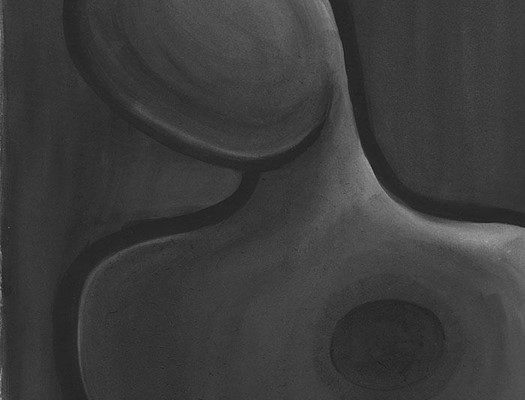
Topic: Persistent depressive Disorder (PDD)
Author: Noor Qasem
Keywords: persistent depressive disorder, PDD, chronic depression, dysthymic disorder.
Editor: Hala Qaryouti
Linguistic editor: Aroob Awwad.
Overview
Persistent depressive disorder (PDD), newly introduced by the DSM-5, is a common mood disorder with a chronic course encompassing both dysthymic disorder and chronic major depressive disorder (MDD) (2). It is defined as a depressed mood for most of the day, for most days, indicated either subjectively by the individual or by observation from others, continuing for at least 2 years in adults, or 1 year in children and adolescents (2). As compared to its non-chronic counterpart, PDD is often accompanied by a more disabling course and poorer prognosis usually associated with an earlier onset of depressive symptoms (3), a higher incidence of psychiatric co-morbidities (4) and a more complicated treatment course, with higher suicide and hospitalization rates (5).
Although previously thought to be a mild disorder, most individuals with dysthymia often far exceed the minimum number of symptoms required for diagnosis, and portray as much functional impairment and poor course as acute depressive disorders (6–10). Despite different forms of chronic depression ranging in severity, they all share similar characteristics of comorbid anxiety and personality disorders, substance abuse, personality traits, depresso-typic cognitions, coping style, history of childhood maltreatment and outcomes (6,11–16). In addition, the fact that the majority of patients with pure dysthymia eventually experience a major depressive episode (MDE) further highlights how closely intertwined these disorders are, thus allowing for the broader, more controversial grouping of the DSM-5.
Prevalence and Epidemiology
PDD is regarded as a public health problem due to its frequency and impact. Around 20-30% of all depressive disorders have a chronic course (17,18). With a lifetime prevalence of 5.7% (3-6%) (17), much less than the 20.6% of MDD(19), persistent depressive disorder is suggested to have a relapsing- remitting pattern, rather than a constant one (20).
Women are affected almost twice as men, (11, 21–23). Association between the incidence of PDD and race, ethnicity and education were found to be inconsistent (11,21,23,24). With regards to age, depression rates tend to decrease with increasing age, especially in ages over 65 (25) .
Etiology and Pathogenesis
It is a common conceptualization that depression, regardless of type or chronicity, is a multifactorial disorder brought upon by more than just biological factors. Social and psychological aspects contribute just as equally. Compared with MDD or depressive disorders in general, PDD has an increased likelihood of first-degree relatives having the same condition.
Information regarding the etiology of PDD, or its constituents, is rather scarce (26). However, several risk factors have been identified. These include, but are not limited to, genetics, epigenetics, previous history of mental illness, neuroticism, high anxiety and life stressors, and past trauma, especially childhood maltreatment, abuse or neglect (27,28).
Strong evidence has been found supporting the theory that the 5-HTTLPR serotonin transporter variant moderates the relationship between stress and depression. The majority of studies on mentioned polymorphisms, however, do not differentiate between types of depression, making it harder to distinguish these conditions genetically (29,30).
The biology is a complex interplay between neurotransmitters and receptors. Serotonin, dopamine, epinephrine, norepinephrine, GABA and glutamate have been identified as the primary neurotransmitters at play (31–34).
PDD in children and adolescents is considered a risk factor for the development of MDD later in life, courtesy of the white matter microstructure changes seen in individuals with early-onset chronic depression (35). The left uncinate, inferior fronto-occipital and cerebrospinal tracts all show significant volume reduction. Also, the frontal areas of the brain as well as the hippocampus show moderate to large volume reductions (36). These changes may be the reason behind the chronicity of the disorder and the recurrence of symptoms (35).
PDD in the elderly shows a slightly different course because older adults, opposed to young adults, present with a relatively pure form of dysthymia, and with less comorbid psychiatric disorders or personal or family history of major depression. So, the term ‘dysthymic disorder’ could remain useful for the elderly. (37,38).
Some of the proposed causes of PDD in the elderly include psychological stresses like bereavement or loss of social support (39), and biological mechanisms like neurodegenerative (40) or cerebrovascular disease (41). A genetically driven thesis for PDD is more likely to be present for early-onset rather than late-onset disorder (42).
Comorbidities
The most prevalent comorbidities are anxiety disorders, personality disorders as well as alcohol and substance abuse disorders. In comparison to patients with non-chronic depression, those with PDD were found to have more psychiatric comorbidities. These comorbidities are viewed as a source of vulnerability that either precedes chronic depression or alters its depressive state. Around 77.7% of patients with CD present with comorbid anxiety disorders (43), 70% of patients with comorbid personality disorders (with a stronger association to cluster C disorders especially avoidant and dependent types) (44,45), and 37.1% with alcohol and substance-abuse disorders (13). Most studies found higher rates of axis 1 and 2 psychiatric disorders in patients with CD than non-CD (4).
DSM-5 Diagnostic Criteria (2)
To diagnose a patient with PDD, the following criteria must occur:
- Depressed mood for most of the day, for more days than not, indicated by the subject or observed by others, for at least 2 years in adults. In children and adolescents, mood can be irritable, and duration must be at least 1 year.
- Presence, while depressed, of two (or more) of the following:
- Changes in appetite.
- Changes in sleep pattern.
- Low energy or fatigue.
- Low self-esteem.
- Feeling of hopelessness.
- Poor concentration or difficulty making decisions.
C. During the previously-mentioned period of disturbance, the subject has never been without the symptoms in Criteria A and B for more than 2 months at a time.
D. Criteria for MDD may be continuously present for 2 years.
E. There has never been a manic or a hypomanic episode, and criteria have never been met for cyclothymic disorder.
F. The disturbance is not better explained by a persistent schizoaffective disorder, schizophrenia, delusional disorder, or other specified or unspecified schizophrenia spectrum and other psychotic disorders.
G. The symptoms are not due to physiological effects of a substance, such drug abuse/medication, or another medical condition.
H. The symptoms cause clinically significant distress or impairment in different aspects of daily functioning.
After the diagnosis of PDD has been established, specify whether:
- The disorder is:
- With anxious distress
- With mixed features
- With melancholic features
- With atypical features
- With mood-congruent psychotic features
- With mood-incongruent psychotic features
- Of peripartum onset
- The disorder is in:
- partial remission
- full remission
- The onset is:
- Early onset: before the age of 21 years.
- Late onset: at or after the age of 21 years.
- For the most recent 2 years of PDD, specify if it was accompanied by:
- Pure dysthymic syndrome: Full criteria for MDE have not been met at least in the preceding 2 years.
- Persistent MDE: Full criteria for MDE have been met in the preceding 2-year period.
- Intermittent MDEs, with current episode: Full criteria for MDE are currently met, but there have been periods of at least 8 weeks in at least the preceding 2 years with symptoms below threshold for a full episode.
- Intermittent MDEs, without current episode: Full criteria for MDE are not currently met, but there has been one or more in at least the preceding 2 years.
Treatment
Since it is deemed one of the most challenging and tedious disorders to treat in psychiatry, traditional monotherapy is usually of less use, and around 40% of the patients are considered treatment-resistant (46). This, in addition to the higher rates of suicide attempts and hospitalizations, calls for a tailored treatment approach.
Complications to treatment are brought upon by several factors. Some of which include: the low percentage of patients receiving adequate treatment (47), low compliance rates (48), the specific characteristics and features seen in PDD patients including childhood trauma or neglect (27) and the low rate of spontaneous remission (49). Altogether, they constitute a resilient disorder.
- Pharmacotherapy
SSRIs, moclobemide, imipramine, ritanserin and amisulpride are the most efficacious drugs in treatment of PDD. However, of the bunch, fluoxetine is proven to be less effective, and imipramine is the least acceptable out of the drugs (50).
Episode length is noted to be a predictor of poorer response to pharmacotherapy (51–53). Nonetheless, some patients with persistent depression do respond and recover after acute phase treatment (54,55).
- Psychotherapy and Combination Therapy
In 2010, a study by Cuijpers et al. found that psychotherapy has a significant effect on PDD patients when compared with the control group, with the degree of effect being linked to the number of sessions. Optimal effect was achieved at a minimum of 18 sessions (56).
The efficacy of monotherapy is dependent on the baseline depression or comorbid anxiety, history of pharmacotherapy, age, and the different subtypes present (46). This shows that for certain subgroups either pharmacotherapy or psychotherapy alone could be a reasonable treatment option, further emphasizing the importance of a tailored approach.
Patients with early-onset PDD, those with childhood maltreatment (57), and those with comorbid social anxiety disorders (50) benefit more from a combination of CBASP (Cognitive-Behavioral Analysis System of Psychotherapy) and medication rather than monotherapy. Patients with the chronic MDD are also more likely to experience increased acute benefits from combination therapy compared to psychotherapy or drug therapy alone (58).
Prognosis
PDD is a chronic disorder with a prolonged, bitter course and a high risk of relapse that greatly impacts the patient’s quality of life. This is reflected in high rates of suicide, both attempted and completed (59,60), higher rates of employment unproductiveness(61), the poorer self-proclaimed health status (62), and the fact that majority of the patients with dysthymic disorder eventually go on to develop superimposed major depressive episodes (63,64).
The estimated 5-year recovery rate from dysthymic disorder is 52.9%. However, among those who recover, 45.2% relapse during a mean of 23 months (65). Lower rates of recovery were seen in patients with chronic stress (66) and those with comorbidities such as anxiety or personality disorders (66–69).
Altogether, despite tending to show mild to moderate symptoms, on the long run, PDD is quite severe (65).
References...





